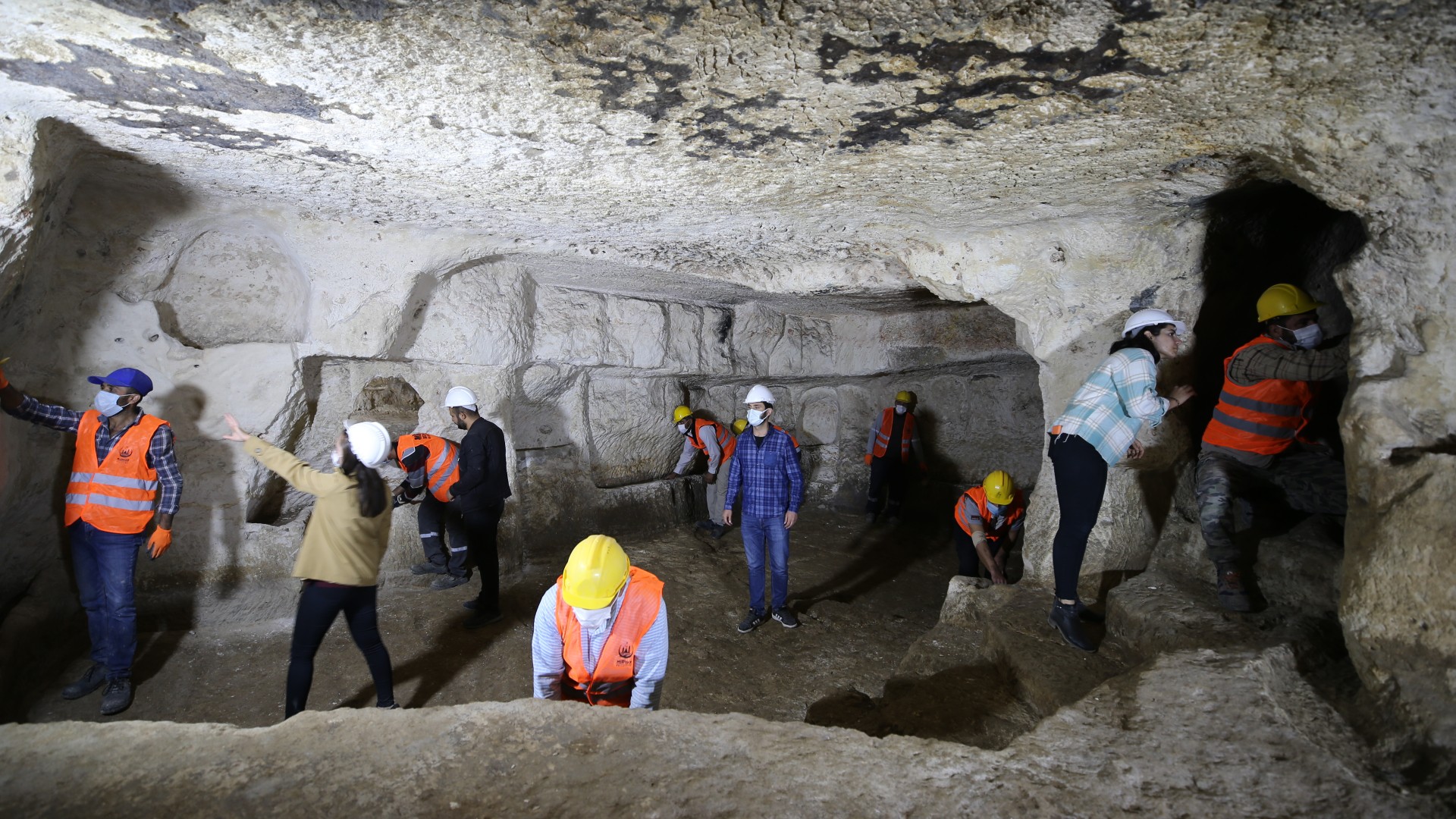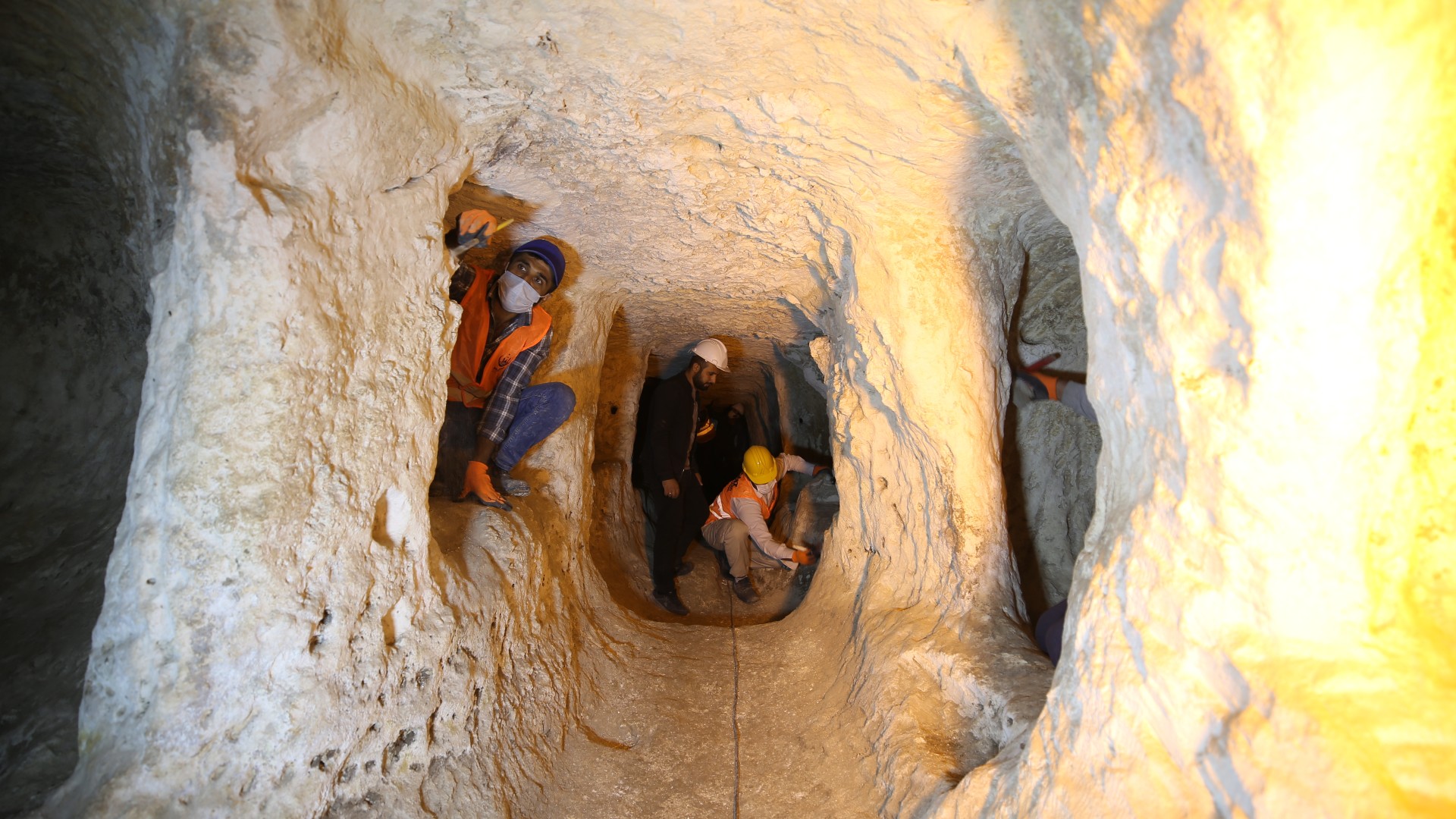Up to 70,000 people could have been in the underground city that was built almost 2,000 years ago. Early Christians may have used the subterranean complex to escape Roman persecution.
Two years ago, the first underground chambers of the ancient complex were found during a project to clean and conserve historical streets and houses. Gani Tarkan, the director of the Mardin Museum and the head of the excavations, told the Anadolu Agency that workers on the project first discovered a limestone cave and then a passage into the rest of the hidden city.
A Christian church and a Jewish synagogue are among the places of worship that have been found after 49 chambers were unearthed in the massive complex.
The Turkish home dates to the Iron Age.
RECOMMENDED VIDEOS FOR YOU...
The subterranean complex was built in the second or third centuries A.D., according to artifacts found in the caverns and decorations on the walls.
There is still a lot to be excavated. According to Tarkan, the entire complex may have been large enough to accommodate between 60,000 and 70,000 people, and that just 3% of the underground city has been explored so far.
He suggested that the city may have originally been a refuge.
The underground city of Midyat was one of the places where families and groups who accepted Christianity took shelter to escape the persecution of Rome.
Roman officials did not distinguish between Jews and Christians because many early Christians were also Jews. In A.D. 64, Emperor Nero blamed Christians for a fire in Rome and killed them. Although the persecutions were sporadic, they continued until the early fourth century, and it is likely that thousands of Christians were executed during this time. Christianity became the official religion of the Roman Empire after Emperor Constantine issued the Edict of Milan.
Matiate may have been used by early Christians to escape Roman persecution, according to an archaeologist with the Office for Protection and Supervision.
In the early period of Christianity, Rome was under the influence of pagans before eventually recognizing Christianity as an official religion, according to a Turkish news outlet. The underground cities provided security and people performed prayers there. They were also places of escape.

The ancient city of Midyat above the subterranean complex is believed to have been built by the Hurrians, a people who occupied parts of central and southern Anatolia up to 4,000 years ago.
The city was first mentioned in Assyrian records in the ninth century B.C. as Matiate, which means "city of caves."
There are Roman-era statues of Aphrodite and Dionysus in Turkey.
During its long history, Midyat was occupied by many different civilization, including Arameans, Persians, Greeks, Romans, Byzantines and Ottomans. According to the Hürriyet Daily News, Midyat draws up to 3 million tourists every year, and is well-known for its ancient architecture.
Nine churches and monasteries in the city are listed as UNESCO World Heritage sites, and more than 100 traditional houses are now protected because of their historical significance.
Tarkan thinks the hidden city of Matiate will be an additional attraction when the excavations are done.

Turkey has a tradition of building homes and cities underground. There are more than 40 ancient subterranean cities found there, including an enormous complex in the central Cappadocia region that was burrowed into soft volcanic rock.
Byzantine Christians and Jews used it as a refuge during Arab invasions between the eighth and 12th century A.D., and it was large enough to hold 20,000 people.
Will Hunt, author of the book Underground: A Human History of the World's Beneath Our Feet, said there were many stories of people in Turkey who had found holes in their land.
He told Live Science that some go down more than 10 levels and have space for tens of thousands of people.
Tarkan suggested that the underground structures at Matiate may have been used in defense.
He said that there would have been an underground city where people would take cover if they were attacked.
All over the world, whenever there is a threat on the surface, people have dark underground spaces to protect themselves from danger, he said.
It was originally published on Live Science.